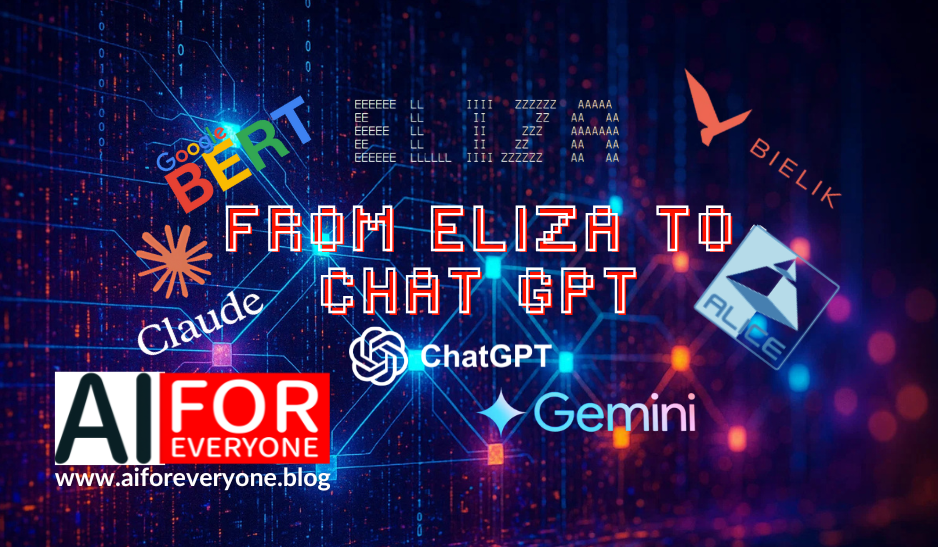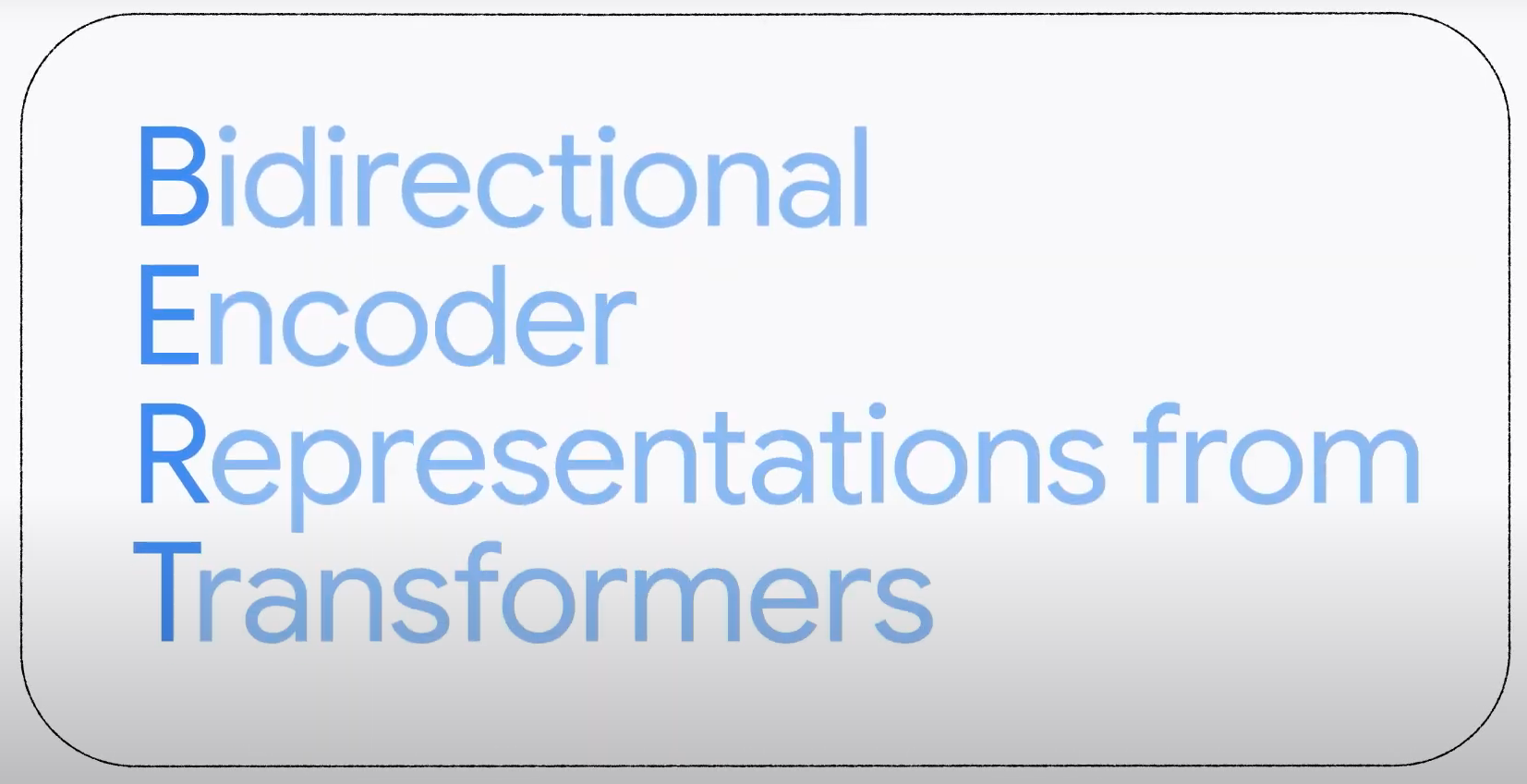From ELIZA to ChatGPT: A Deep Dive into the Evolution of Chatbots

Have you ever wondered how today's machines can talk to us, write poems, and even help with daily tasks? It didn't happen overnight. Advanced language models like ChatGPT, Gemini, Claude, or the Polish Bielik, which are increasingly entering our reality, are the culmination of decades of research and experimentation. This journey began much earlier than you might think, with roots reaching back to the mid-20th century when computers filled entire rooms, and the idea of a "thinking machine" fascinated computer science pioneers.
The Beginnings of Dialogue: ELIZA (1960s) and the Illusion of Understanding
 Chat with ELIZA - Author: Joseph Weizenbaum Source: https://en.wikipedia.org/wiki/ELIZA
Chat with ELIZA - Author: Joseph Weizenbaum Source: https://en.wikipedia.org/wiki/ELIZA
It all started between 1964 and 1967 within the walls of MIT, where Joseph Weizenbaum created a program that forever changed the perception of human-machine interaction. This was ELIZA, whose operation Weizenbaum described in a 1966 publication. Although often considered the first chatbot, Weizenbaum's intention was not to create a "conversationalist" but rather a platform for studying communication between humans and machines. ELIZA's most famous script, known as DOCTOR, simulated a conversation with a Rogerian psychotherapist. How did it work? Surprisingly simply. ELIZA didn't understand a single word the user typed. The program used pattern matching techniques and simple substitution rules. In response to a typed sentence, ELIZA would search for keywords and transform the user's statement, often asking questions like "Why do you think that...?" or repeating a part of the sentence.
-1.jpg?width=603&height=904&name=Video_Game_Museum_in_Berlin_(44129332940)-1.jpg) Chat with script DOCTOR in ELISA Source: https://en.wikipedia.org/wiki/ELIZA
Chat with script DOCTOR in ELISA Source: https://en.wikipedia.org/wiki/ELIZA
To Weizenbaum's own surprise, people reacted to ELIZA very emotionally. They began confiding in the program, attributing human traits, empathy, and understanding to it. His own secretary asked him to leave the room so she could "talk" to ELIZA privately. This phenomenon was later called the "ELIZA effect" – the tendency to unconsciously anthropomorphize machines, especially those that can mimic human conversation. ELIZA, despite its simplicity, became a milestone, showing the potential inherent in dialogue with machines and firing the imagination of researchers. It was also one of the first programs that could be subjected to the legendary Turing Test, proposed by Alan Turing back in 1950, which I wrote about on the blog some time ago.
The next step in this field, though still based on similar principles, was PARRY, created in 1972 by Kenneth Colby. PARRY was also rule-based but simulated a person suffering from paranoid schizophrenia. Interestingly, in tests involving psychiatrists, PARRY proved so convincing that specialists were often unable to distinguish its responses from those of real patients.

Source: https://archive.org/details/parry_chatbot
The Evolution of Rules: A.L.I.C.E. (1990s) and AIML
Over the following decades, chatbots developed slowly. In 1988, work began on the Jabberwacky project (publicly released in 1997), and in 1992, Dr. Sbaitso appeared – these programs attempted to refine the formula of rule-based conversation. It wasn't until November 23, 1995, that a real qualitative leap occurred (though still within heuristic programming) with the birth of A.L.I.C.E. (Artificial Linguistic Internet Computer Entity). Created by Richard Wallace, A.L.I.C.E., inspired by ELIZA, was much more elaborate. Its "knowledge" wasn't hard-coded into the program but stored in external files using a specially created markup language (developed between 1995-2000) – AIML (Artificial Intelligence Markup Language).

Website A.L.I.C.E. Source: https://blog.ubisend.com/discover-chatbots/chatbot-alice
AIML, based on XML, allowed for the definition of categories, each containing a pattern (potential user input) and a template (chatbot response). Although the pattern matching mechanism was still the core of A.L.I.C.E.'s operation, AIML enabled the creation of much more complex and extensive sets of conversational rules. At its peak, A.L.I.C.E. had over 40,000 such categories, whereas the original ELIZA had only about 200. Furthermore, A.L.I.C.E. was developed as an open-source project, allowing the community to co-create its knowledge base and refine its "personality."
 A sample AIML category that illustrates the structure of the language.
A sample AIML category that illustrates the structure of the language.
A.L.I.C.E.'s success was undeniable – it won the Loebner Prize three times (in 2000, 2001, and 2004), awarded to programs considered the "most human-like." Nevertheless, even A.L.I.C.E. couldn't fool more discerning users or pass the Turing Test in the full sense of the word. Its responses, though often accurate, revealed their mechanical nature in longer conversations. However, it showed how far one could go using clever heuristics and extensive rule bases.
The Breakthrough: The Era of Machine Learning and Large Language Models (from ~2010)
Rule-based chatbots like ELIZA and A.L.I.C.E. had a fundamental limitation: their conversational abilities were restricted to the patterns and responses foreseen by their creators. They couldn't learn from conversations or generate entirely new, creative answers. The real revolution came with advances in Machine Learning (ML) and Natural Language Processing (NLP), which gained momentum in the second decade of the 21st century. These ideas, originating from the historic Dartmouth Conference in 1956, needed decades of algorithm development, increased computing power, and the availability of vast datasets to fully flourish.
Rigid rules were abandoned in favor of a completely new approach: training deep neural networks on gigantic text corpora. These models, known as Large Language Models (LLMs), learn statistical patterns in language, grammar, semantics, and even a kind of "knowledge" about the world. Their primary task is to predict the next word (or token) in a sequence, allowing them to generate coherent, grammatical, and often surprisingly relevant texts.
This video explains how BERT helps the Google search engine understand language.
The emergence of models like Google's BERT in 2018, followed by OpenAI's GPT (Generative Pre-trained Transformer), ushered in a new era. Chatbots ceased to be mere pattern-replaying programs – they became language generators. The culmination of this trend is the explosion in popularity of tools like ChatGPT (whose first public version appeared in late 2022), Anthropic's Claude, Google's Gemini, or Microsoft's Copilot. There's also a Polish contribution with the Bielik model, demonstrating the global reach of this revolution. It's also worth remembering earlier voice assistants like Siri (2011), Alexa (2014), or Google Assistant (2016), which also contributed to popularizing voice and text interactions with AI.
They can not only hold conversations but also write code, translate, summarize texts, answer complex questions, and perform many other tasks. Of course, as I wrote in the article about Generative AI, they are still far from true, human-level general intelligence. They make mistakes, sometimes "hallucinate" by generating false information, and lack a genuine human-like understanding of the world. However, their linguistic abilities are unprecedented.
The Evolution of Interaction: From Rigid Scripts to Fluent Conversation
The history of chatbots is not just a history of technology, but also an evolution of how we communicate with machines. ELIZA required the user to adapt to its limited schema. A.L.I.C.E. offered more flexibility but still operated within defined rules. Today's LLMs can adapt to our conversational style, understand context, handle multi-threaded discussions, and generate responses that are often difficult to distinguish from human ones.
This fluidity of interaction makes the boundaries once set by the Turing Test increasingly blurred. Is a machine that can convincingly imitate a human in conversation intelligent? This question remains open and leads us to deeper reflections on the nature of intelligence, consciousness, and language, which I touched upon in the text about the search for the essence of AI.
We are witnessing a fascinating moment in AI history. From simple pattern-matching programs of the 1960s, through rule-based systems of the 1990s, we have reached the era of language models capable of generating complex and creative content in the 2020s. As in the past, enthusiasm mixes with caution. Is the current boom in generative AI another cycle, after which an "AI Winter" will come, or are we on the verge of something much bigger, perhaps even the technological singularity described by Vernor Vinge? One thing is certain – chatbots, in their increasingly advanced form, have permanently entered the landscape of our digital reality, and their further evolution promises to be one of the most dynamic and fascinating chapters in the history of artificial intelligence.
Note!
Charting the path from early chatbots like ELIZA to modern AI such as ChatGPT and Gemini, this article was developed in partnership with Gemini 2.5 Pro (experimental). Gemini assisted with researching chatbot history, structuring the content, and editing the piece – a collaboration underscoring the advancements in human-AI interaction detailed here. Notably, Gemini also performed the entire translation from Polish to English.





